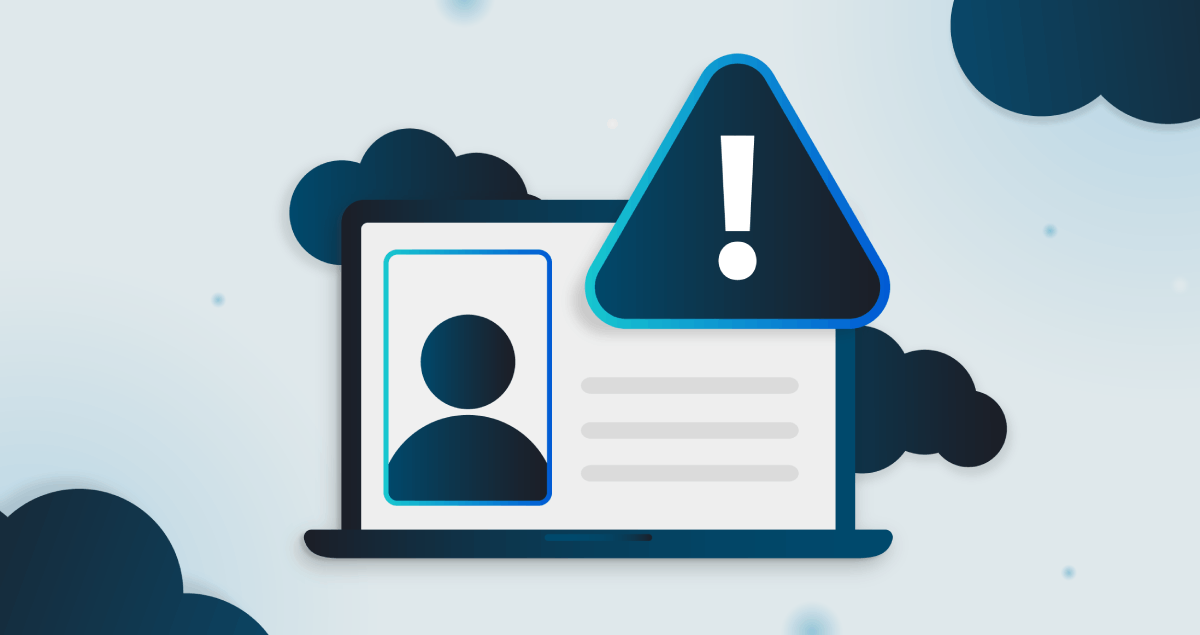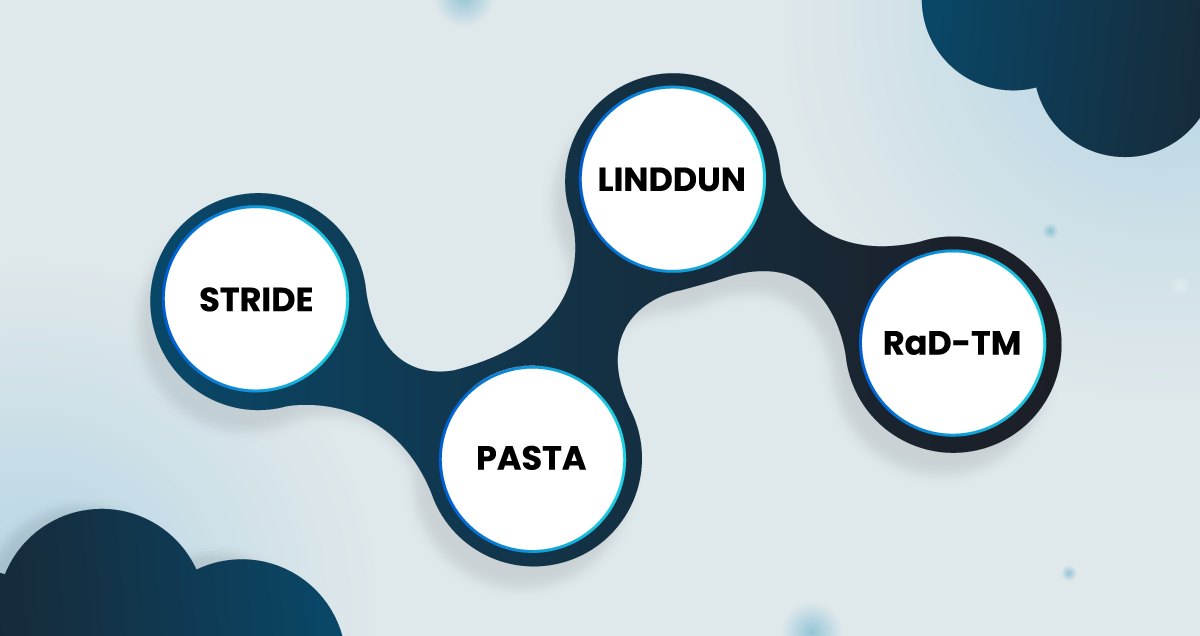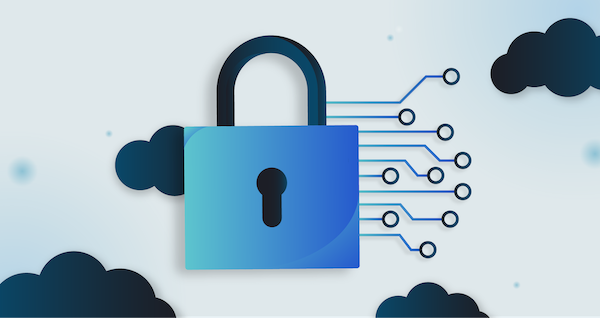Insider threats are growing at a fast rate. Last year alone, 83% of organizations faced insider attacks, and some reports suggest incidents are now occurring at five times the rate seen in 2023. That’s a worrying trend.
It doesn’t always mean malicious employees are out to get you. Insider threats can also come from negligence, misuse, or even simple human error, and put your organization’s data and other critical assets at risk.

What Is an Insider Threat?
When most people think of cybersecurity, the image that comes to mind is usually that of an attacker posing an external threat, such as sophisticated malware or a hacker launching a cyberattack.
The thing is, some of the biggest risks don’t come from outside, but from individuals with authorized access who can exploit their position. An insider threat is a security risk that comes from within an organization, involving a current or former employee.
Whereas an external attacker has to break in, insiders already have legitimate access, whether through their role, credentials, or technical integration.
The problem arises when that access is misused, either intentionally or unintentionally. Insiders may have direct access to the organization’s network and resources, including sensitive data.
The challenging part is that insider threats often go undetected. Security systems are designed to sound the alarm for unusual behavior from the outside, but insiders usually look “normal” until it’s too late.
Also, as more companies integrate agentic AI and AI agents into their workflows, the scope of insider threats is rapidly expanding.
The Main Types of Insider Threats
Insider threats have different types, so understanding them can help organizations identify potential weak areas.
1. Malicious Insiders
Employees, contractors, or partners can intentionally cause harm. Their motivations can vary and include financial gain, revenge, ideology, or coercion. However, the outcome is the same, resulting in data theft, fraud, sabotage, or leaks of sensitive information.
The 2023 Tesla data breach, which leaked sensitive information of 75,000 employees, was due to “insider wrongdoing.”
And who can forget Edward Snowden’s 2013 NSA leaks? Regardless of how one views the motivations, it remains one of the most infamous insider incidents in the history of cybersecurity.
2. Negligent Insiders
Sometimes, insider threats happen due to carelessness, such as employees who reuse weak passwords, fall for phishing emails, or inadvertently misconfigure settings.
Developers might reuse weak credentials, leave sensitive data in code repositories, or expose secrets in logs or prompts. These can expose the organization to attackers without even realizing it.
Human error remains a consistent source of security incidents, contributing to 95% of data breaches.
3. Compromised Insiders
This type occurs when an outsider takes over a legitimate insider’s account or credentials to gain access to sensitive data.
From the system’s perspective, everything looks legitimate because the attacker is logging in with real credentials. However, behind the scenes, it’s an external adversary controlling everything, making detection more complex.
Credential stuffing and malware infections often lead to compromised insider situations.
4. Third-Party Insiders
Organizations rely on contractors, vendors, suppliers, and cloud providers, and each of those connections introduces additional access points. If a vendor is compromised, that risk can enter the organization itself.
An example is when cybercriminals paid bribes to customer support agents of a third-party vendor to access and steal sensitive data belonging to nearly 70,000 customers.
Why an Insider Threat Is So Dangerous
Why do insider threats cause so much concern in the cybersecurity world? Three main reasons stand out:
-
Access advantage: Insiders already have legitimate access, so their activity is harder to detect.
-
Data sensitivity: Insiders often know where vital information is stored, whether that’s customer data, financial information, intellectual property, or trade secrets.
-
High costs: Insider incidents and data breaches are not only frequent but also costly to remediate.
Talking about high costs, the average annual cost of insider incidents was reported as being $17.4 million, an increase from previous years. That’s a huge financial risk for organizations to contend with.
Also, don’t forget that Insider threats can also bring compliance issues. GDPR and CCPA require breach notification within 72 hours, HIPAA tracks all patient record access, and PCI DSS enforces strict monitoring for payment card data.
Insider Threat Examples
No matter the industry, organizations have seen how damaging insider threats can be.
-
Healthcare: Hospital staff accessing patient records without authorization, sometimes for curiosity, sometimes to sell data.
-
Finance: Rogue employees conducting unauthorized transactions or leaking sensitive financial data.
-
Technology: Engineers or developers taking intellectual property or source code to competitors.
-
Government: Unauthorized disclosures of classified information.
These examples show that insider threats are prevalent across different industries. Basically, anywhere sensitive data and trusted users are present, the risk exists.
Technical Indicators of Insider Threats
Malicious or negligent insiders already have access to your systems, making subtle warning signs easy to miss without the proper monitoring in place.
Some of the key technical indicators for insider threats include:
-
Unusual login activity: Logins from unexpected locations or at odd hours, repeated failed attempts, or access from former employees can signal unauthorized activity.
-
Suspicious file access or transfers: Accessing confidential data outside regular duties or transferring large volumes of sensitive information may indicate an insider preparing to steal or leak data.
-
Unauthorized devices or software: Personal devices or unapproved applications can introduce flaws or be deliberately misused to bypass security controls.
-
Abnormal network activity: Accessing restricted areas, transferring data to external cloud services, or using encryption to hide activity are warning signs of potential insider threats.
Organizations need an insider threat program that combines technical monitoring with behavioral analysis. This includes deploying SIEM systems, performing regular security audits, assessing risks to identify gaps, and incorporating threat modeling.
Gen AI and AI Agents as Insider Threats
Until recently, insider threats were mostly about humans. However, the rise of GenAI and agentic AI is changing all that. A recent report warns that autonomous AI agents are starting to behave as unmonitored insiders within enterprise systems.
AI as the New “Insider”
When AI tools are integrated into business workflows, they often have access to sensitive information, credentials, or even system permissions. That means they operate with insider-like privileges. If misconfigured, exploited, or not properly monitored, they can become powerful insider threats.
For example:
-
An AI-powered chatbot trained on internal documents could accidentally leak sensitive company data if asked the right question.
-
AI agents connected to internal APIs may be manipulated via prompt injections to perform harmful actions, like exfiltrating data.
-
Misconfigured AI services could store sensitive prompts or logs insecurely, exposing them to unauthorized access.
Attacker Exploitation of AI
Attackers are already finding ways to exploit AI, with techniques such as token smuggling and system prompt manipulation.
Traditional security methods don’t cover these, so training in agentic AI security risks, LLMs, and other AI-related aspects is essential.
In this sense, AI is a potential new class of insider, operating with speed and scale no human could match.
Growing Concerns in Organizations
As AI adoption increases, security teams are realizing they need to expand their definition of “insider.” Rather than being only about employees or contractors, it’s now also about any entity, human or machine, that has privileged access.
Nearly two-thirds of European cybersecurity professionals consider insider threats their top risk, and research indicates that generative AI is a key factor, enabling faster, stealthier, and more difficult-to-detect attacks.
How Organizations Can Defend Against Insider Threats
Fighting insider threats requires a mix of strategy, culture, and technology. It’s about finding malicious behavior and also preventing mistakes, ensuring that trusted insiders don’t become weak links and cause data breaches.
Some best practices and security measures include:
-
Access controls: Apply the principle of least privilege so insiders only access what they need. Regularly review permissions and revoke access promptly when roles change or employees leave.
-
Monitoring and detection: Make use of tools that find unusual activity from valid accounts. Also, look out for bulk data transfers, odd-hour access, or attempts to reach sensitive systems outside an employee’s role.
-
Developer practices: Encourage secure coding, proper secrets management, and careful dependency control. Additionally, do peer reviews, pair programming, and signed commits. Other ways include limiting production access, isolating dev/test environments, and regularly patching.
-
Training and awareness: Ongoing programs teach employees how actions like sharing passwords or clicking phishing links create risk. Build a culture where suspicious behavior is reported.
-
Third-party risk management: Regularly review vendor and partner security practices, audit their access, and enforce strict contractual requirements for data handling and protection.
-
AI-specific safeguards: With AI in business processes, new insider risks can emerge. Apply secure development practices, build guardrails, and audit system activity to quickly spot anomalies.
How SecureFlag Helps Prevent Insider Threats
Insider threats are best mitigated at their source, and that is by ensuring teams are trained to identify risks, follow secure coding practices, and respond effectively when something goes wrong.
Our hands-on secure coding labs and learning paths give teams practical experience in:
-
Identifying and remediating misconfigurations before they become insider risks.
-
Understanding how credential leaks or inadequate practices can be exploited.
-
Learning how AI-related vulnerabilities can be prevented.
-
Practice responding to threat scenarios in a controlled environment.
There’s no theory-heavy training, as SecureFlag’s approach focuses on doing. That’s because, when it comes to insider threats, the best defense is knowledge, awareness, and practice.


